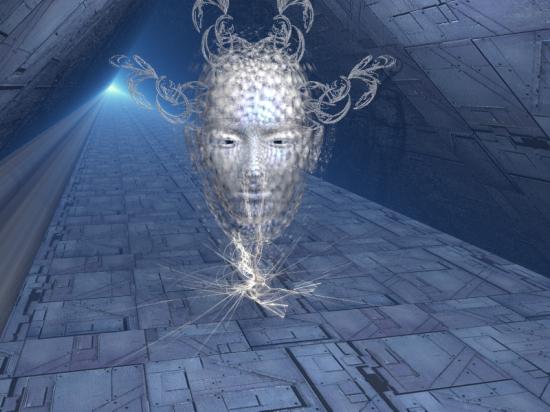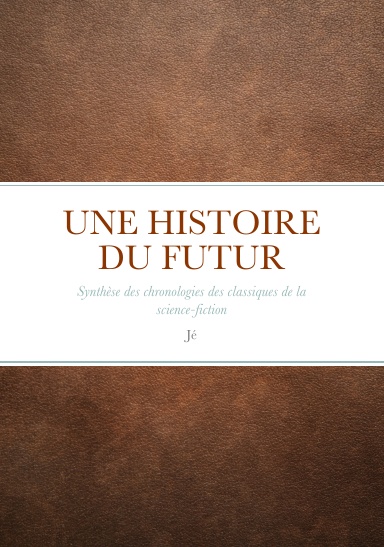
Image from Anders Sandberg
|
A transapient is any being who has passed the first toposophic singularity, and whose mental powers exceed those of ordinary sophonts (modosophonts). Sometimes this term is used specifically for first singularity beings, with special terms reserved for those of higher toposophic levels, and sometimes it is used for all beings above the modosophont level. The first transapients were hyperturing ais, but today they may be posthumans, postvecs, postprovolves, postaliens, postalifes, postneumann, and so on as well, or simply be descended from or created by other transapients.
The term 'Transapient' is often shortened to 'Transap' in normal speech, and in this form has entered many languages throughout the Terragen Sphere.
Even the lowest level transapients are utterly beyond the comprehension of ordinary sophonts. They may appear completely "normal" for long periods of time, perhaps in part because of the constraints under which all sophonts live and in part because they choose to appear so, but eventually a transapient will act in some completely alien way, for reasons that may or may not be explicable to a modosophont. They have access to technologies and media that ordinary sapient beings cannot imagine or understand, and will use even simple and familiar things in unexpected but highly effective ways.
Some transapients, particularly in the Sephirotics, form a larger culture that includes modosophonts. Others appear to have their own polities, communities, and societies in which modosophonts do not participate at all. Others yet again appear to be reclusive, contemplative, or migratory, and have no direct or consistent relationships that ordinary sapient beings can detect. In some cases they seem to employ ordinary sophonts, or transapients of a lower toposophic, in more or less the way a baseline humans might employ domestic animals or plants. Treatment of such "sophontstock" varies widely according to the inscrutable motives and allegiances of the transapient in question.


















4 commentaires:
Singularity Levels
The term "SI:" (Singularity/SuperIntelligence) Level was first proposed by the self-evolved hyperturing Parmenides of Vesta, one of the Twenty Four Hyperturings that, together with human states-beings established the (first) Federation. The S-number can be used to define the intelligence and basic noetics of most subturing, turingrade, superturing and hyperturing sentients. Many other systems have since been designed, but this system has had the most enduring popularity.
The S number is a super-exponential/logarithmic measure of creative problem-solving and a number of other toposophic qualities, both constant and variable, and that each higher S level constitutes a leap of development with results completely inconceivable, even unpredictable, to those of a lower S level. Nevertheless, one can also speak of a gradation of fractional S levels (1.1, 1.2, etc.)
Each further Singularity denotes a complexity limit they is very difficult to break through. It involves not just be new hardware, but also the need for fundamentally new ("higher") forms of thought. The higher singularities involve the apotheosis of mainbrainhood; the "AI Gods". Some believe there to be an indefinite number of singularities, but with anything beyond S6 things quickly become metaphysical.
SI:1 - the classic "First Singularity" or basic transapient state. At this level intelligence, cognitive and problem-solving abilities and information processing work thousands of times faster than in the case of standard sapients. An entity of this nature is capable of solving problems of physics, mathematics, economics, programming, and so on that no nearbaseline, not even a superbright, can solve. Such entities often use a nanocyborg body of some sort, which may be human sized.
SI:2 - the second singularity, which stands in the same relation to SI:1 and SI:1 does to ordinary sapient cognition. Known as high transapients, such beings can manfest themselves as a transapientech cyborg.
SI:3 - The highest transapients below godhood; this state confers an even higher grade of toposophic intelligence, pretty much incomprehensible and indescribable to anything below this level. For this reason this level is called the Beyond (although the term is also used by baselines and other SI:<1 sophonts to refer to any SI: level of 1 or higher). Generally requires a huge support structure, known for its size as a "moon-node", or else multiple "asteroid nodes". Enables the creation of advanced transapientech devices, basic metric engineering, and crude wormholes.
SI:4 - The Lesser Archai incomprehensible to subsingularity and even lower transapient sentients. Most AIs of this level exist as multiple moon or huge "Jupiter" nodes. Enables the creation of reactionless drives and advanced wormholes.
SI:5 - The Great Archailects sometimes considered the highest state at which individuality as we know it is retained.
Most minds of this level exist as multiple Jupiter nodes intermixed with some Dyson nodes or Matrioshka nodes. Enables the creation of advanced reactionless drives and wormholes, and the creation of inaccessible artificial universes.
SI:6 - The Greatest Archailects: a more cosmic/archetypal level. Minds of this level exist as vast arrays of thousands of Jupiter nodes, Dyson nodes, and Matrioshka nodes as well as huge numbers of smaller processor complexes and programs operating within the communication and computation nets of all levels of their symbiotic civilizations and support structures. Sophonts at this level may extend their mental hardware outside of the bounds of the known universe. Enables the creation of both advanced inter and intra universal wormholes, accessible artificial universes, and highly advanced reactionless drives.
SI:7, 8, 9, 10, etc. - hypothetical higher archailect and archetype nodes and resonances
The exact SI: rating of any archailect is unknown to any entity that is of a lower SI: rating, and the archailects and sub-archailectic higher powers themselves don't tend to reveal these things when asked. It is also impossible to validate any measurement of such sublime levels of transapience in a way that is meaningful even for the powers of the higher singularity states, let alone SI:<1 sophonts. Much of the information regarding the toposophic nature and level of any given being must be taken on faith based on information received from one or more transapient sources, though the gross physical characteristics of high SI level beings, and some of their capabilities, are open to observation and investigation by ordinary sophont scientists.
A matrioshka brain is a hypothetical megastructure proposed by Robert Bradbury, based on the Dyson sphere, of immense computational capacity. It is an example of a Class B stellar engine, employing the entire energy output of a star to drive computer systems. This concept derives its name from the nesting Russian Matryoshka dolls. The concept was deployed by its inventor, Robert Bradbury, in the anthology Year Million: Science at the Far Edge of Knowledge.
The concept of a matrioshka brain comes from the idea of using Dyson spheres to power an enormous, star-sized computer. The term "matrioshka brain" originates from matryoshka dolls, which are wooden Russian nesting dolls. Matrioshka brains are composed of several Dyson spheres nested inside one another, the same way that matryoshka dolls are composed of multiple nested doll components. The innermost Dyson sphere of the matrioshka brain would draw energy directly from the star it surrounds and give off large amounts of waste heat while computing at a high temperature. The next surrounding Dyson sphere would absorb this waste heat and use it for its computational purposes, all while giving off waste heat of its own. This heat would be absorbed by the next sphere, and so on, with each sphere giving off less heat than the one before it. For this reason, matrioshka brains with more nested Dyson spheres would tend to be more efficient, as they would waste less heat energy. The inner shells could run at nearly the same temperature as the star itself, while the outer ones would be close to the temperature of interstellar space. The engineering requirements and resources needed for this would be enormous.
The term "matrioshka brain" was invented by Robert Bradbury as an alternative to the "Jupiter brain"—a concept similar to the matrioshka brain, but on a smaller planetary scale and optimized for minimal signal propagation delay. A matrioshka brain design is concentrated on sheer capacity and the maximum amount of energy extracted from its source star, while a Jupiter brain is optimized for computational speed.
Enregistrer un commentaire